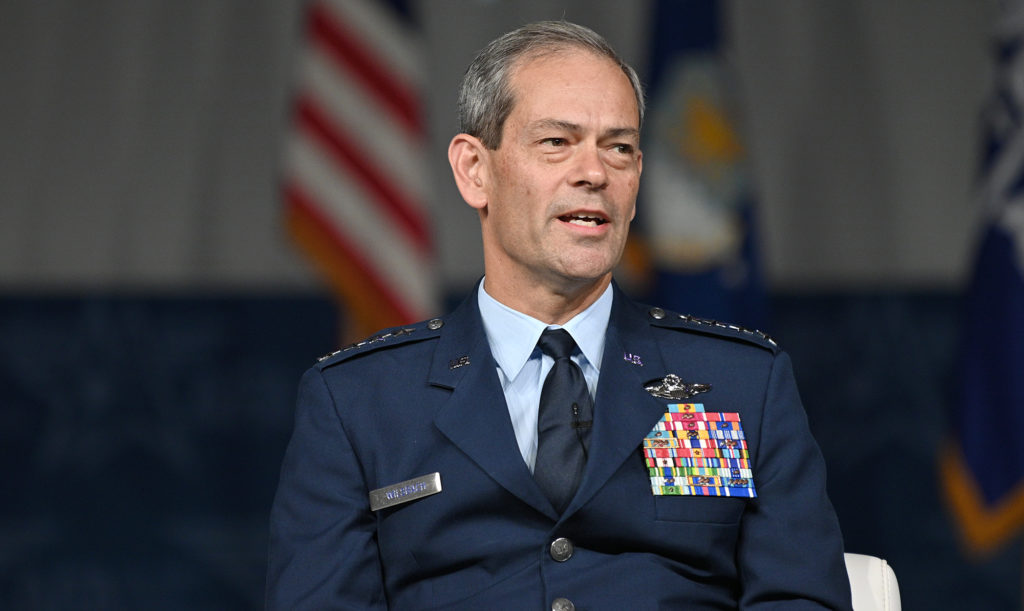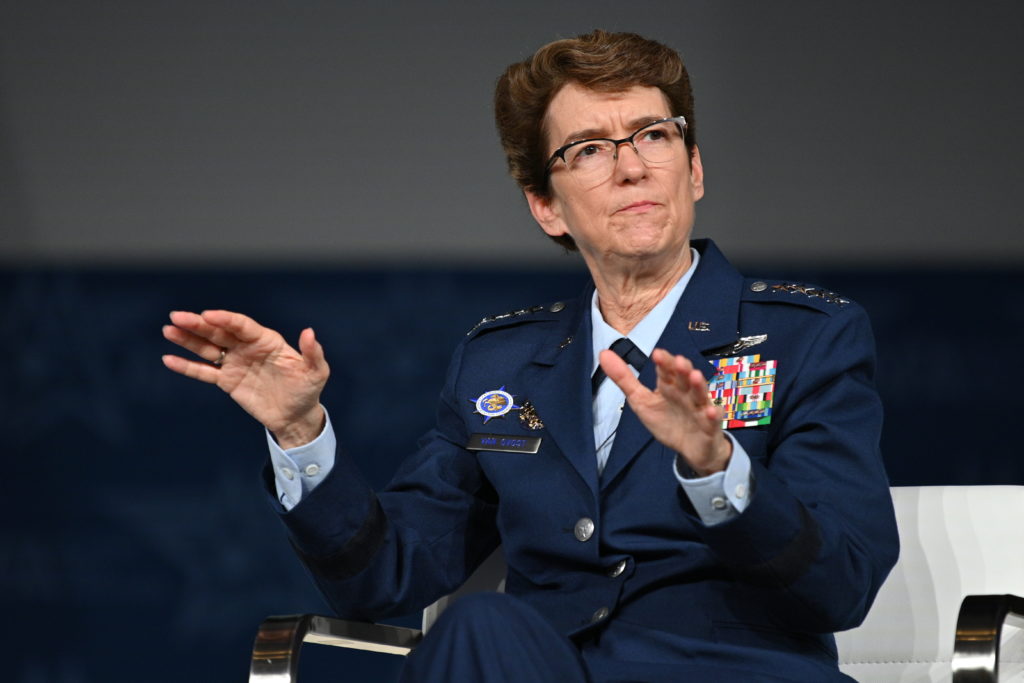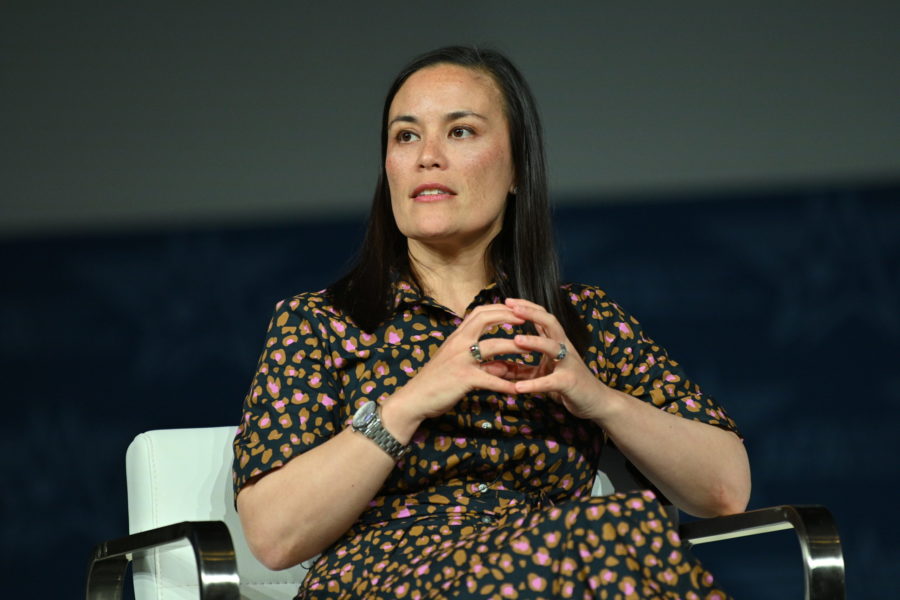China fired an unprecedented fusillade of ballistic missiles and launched military maneuvers in the waters surrounding Taiwan in August, closing sea lanes and forcing the cancellation of scores of airline flights in a show of pique at the recent visit to the island by U.S. Speaker of the House Nancy Pelosi (D-Calif.). Nowhere was that dangerous provocation watched more closely than at U.S. Indo-Pacific Command in Hawaii, which is responsible for defending the rules-based international order in a region where it is increasingly under assault.
Just weeks earlier, for instance, Beijing had unilaterally declared that the roughly 100-mile Taiwan Strait was no longer “international waters.” That came after it repeatedly flaunted international maritime law in recent years by constructing and militarizing a string of small islands to back its discredited claim of sovereignty over virtually the entire South China Sea. For wary U.S. military commanders, last month’s show of Chinese military force around Taiwan was just the latest evidence of Beijing’s hegemonic goals.
China’s militaristic response to Pelosi’s visit was a case in point. “That was just a politician going to talk to another politician, which happens all over the world, but China chose to overreact, including by launching missiles over the top of Taiwan,” said Air Force Gen. Kenneth S. Wilsbach, commander of Pacific Air Forces and air component commander at U.S. Indo-Pacific Command, speaking Sept. 19 at AFA’s Air, Space & Cyber Conference. “We’ve also heard [Chinese President Xi Jinping] tell his military commanders to be ready to take Taiwan by force by 2027.”
After escalating the Pelosi visit into the worst security crisis in the Taiwan Strait in over 20 years, Beijing released a little-noted white paper to legitimize its threats titled “The Taiwan Question and China’s Reunification in the New Era.” The new era refers to an upcoming party conference that is expected to “elect” Xi to an unprecedented third term. The paper details Beijing’s determination in “resolving the Taiwan question and realizing China’s complete reunification,” by force if necessary.
“That paper claims that China is a country that produces stability in the region, even as it launches missiles over Taiwan, as if that’s supposed to be stabilizing. It’s not,” said Wilsbach. “That paper includes a number of statements like that that are just so hypocritical, but it shows you how the Chinese think. They think just saying something enough times makes it true. That’s what happens in totalitarian regimes where no one challenges what you say.”

China, China, China
In the “Preparing for Global Competition” panel at AFA’s Air, Space & Cyber Conference, senior Air Force officials revealed just how profoundly the potential for conflict with an increasingly aggressive China has come to dominate internal counsels and the service’s strategic plans.
“When we talk about ‘global competition,’ we’re talking about China, China, China,” said Gina Ortiz Jones, undersecretary of the Air Force. “If you don’t wake up thinking about the pacing challenge, you’re doing it wrong.””
The fundamental challenge is that for over a decade China has pursued a focused “anti-access/area denial” military strategy, primarily by holding a relative handful of major U.S. bases in the Indo-Pacific at risk with its massive arsenal of theater ballistic missiles. A series of annual, classified Air Force war games over that period has shown the U.S. military struggling to project power and come to the defense of Taiwan under those circumstances.
The Air Force has to transition to the agile combat employment (ACE) doctrine “because traditionally we had only a handful of very large bases in a theater, and adversaries developed the capability to lob missiles into those bases and shut them down, depriving us of our air power,” Wilsbach said. “We essentially had all of our eggs in one basket.”
The Air Force’s chief answer is ACE to enable rapid deployments across a far more dispersed and far-flung theater footprint, greatly complicating an adversary’s targeting challenge. Shifting Air Force combat operations from major air bases to dispersed, bare-bones airfields, however, represents a fundamental change requiring a reimagining of every level of operations, from command-and-control and logistics to air base security and repair.
“We have to get at the ‘agility’ part of ACE, which will require that the Air Force exercise that agility and not [be] afraid to try new ways to solve the gaps in that more agile force,” said Gen. Jacqueline D. Van Ovost, commander of U.S. Transportation Command. “I also think some of the lessons we learned from Afghanistan are pertinent, because we were faulted for our ability to ‘scale quickly’ and eventually had to abandon some of our processes [slowing down operations]. We also could not have accomplished that mission without allies granting us overflight rights, which we will need in spades in the Indo-Pacific.”

Such a fundamental reimagining of air operations has touched on virtually all aspect of operations, starting with command and control. This summer Air Force Chief of Staff Gen. Charles Q. Brown Jr. met with his fellow service chiefs to discuss the way forward in continuing development of joint all-domain command and control (JADC2), which will become even more important in connecting platforms and sensors in a widely dispersed battlespace.
“In exercising ACE we are expanding the number of hubs and spokes we use, which creates extremely complex command-and-control challenges, especially in the midst of dynamic exercises that create a contested environment in terms of jamming and chemical/biological/radiological threats,” Wilsbach said. Because adversaries will also target logistics and resupply nodes, the Pacific Air Forces has received funding to significantly increase its levels of prepositioned equipment, fuel, ammo, and supplies in the Indo-Pacific region. “Another important piece we are working is rapid airfield damage assessment and repair, so that if an airfield takes a hit ,we can fill those holes and get it running again very quickly.”
To facilitate a much wider dispersal of air operations, Pacific Air Forces is already negotiating new basing and overflight rights in the region and expanding airfield facilities for added fuel and weapons storage. “In the next three to five years we’ll also see the extension of runways in small islands in the Pacific, including around the Guam cluster. This is all being done to counter China’s capability to put missiles in places we’d like to operate.”
After achieving initial operating capability of the ACE doctrine in 2021, PACAF is working to achieve full operational capability. Already its focus on dispersed operations and the flexibility of “multi-capable Airmen” is becoming second nature in the theater.
“Last year ACE was new and sort of episodic, but wings in Pacific Air Forces are conducting some kind of ACE event almost every day now,” Wilsbach said. “Just recently we had an F-35 pilot land in Elmendorf in Alaska and get out of the cockpit and refuel his own jet. I never had to do that!” With ACE, he said future pilots will land on small islands in the Pacific, pull up to a gas pump, and be airborne again before getting the tasking for their next mission while in the air. “That’s why I’m really confident we could respond successfully to a Chinese attack on Taiwan,” Wilsbach said.


